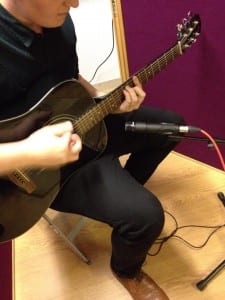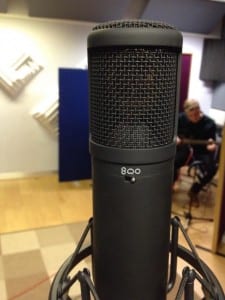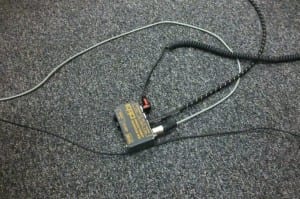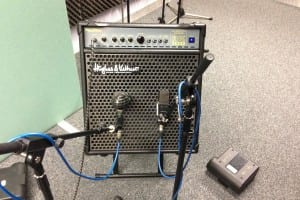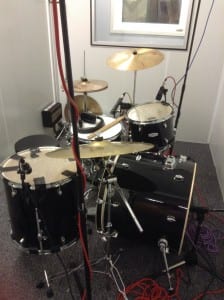This week we recorded the rhythm guitar parts for our cover of Fleetwood Mac’s ‘Don’t Stop’. For this we had two guitarists playing an acoustic and and electro-acoustic guitar. We decided to record both guitars at the same time in separate rooms using different recording techniques.
The first guitar was the acoustic guitar. For this we set the first guitarist up in the live room and used a Shure 57 placed above the 12th fret of the guitar and a sE2200a II condenser microphone as a room mic placed at the other end of the room. The sE2200a II had multiple polar pattern options – for this we used the omni-directional polar pattern to pick up the whole sound of the room.
The second guitar was the electro-acoustic guitar. For this we set the second guitarist up in the dead room and took the output from the guitar and plugged it direct into the DI rack and then into the desk.
Before we started recording, we grouped the two bass guitar tracks from last week and sent them to one fader – this allowed us to increase the volume of the bass guitar in the mix and keep the balance between the two tracks the same. Next we set up the headphone mix – the first guitarist on headphone mix A and the second on headphone mix B.
Once both guitarist were happy with their headphone mixes we started to record the tracks. Both guitars had a different sound which when combined created a full blend of sounds.
Microphone List and Channel Guide
Ch. 4 – Acoustic Guitar 1: Shure SM57 (Above the 12th Fret)
Ch. 5 – Acoustic Guitar 1: sE2200a II (Used as a room mic)
Ch. 6 – Electro-Acoustic Guitar: DI signal into the DI Rack
